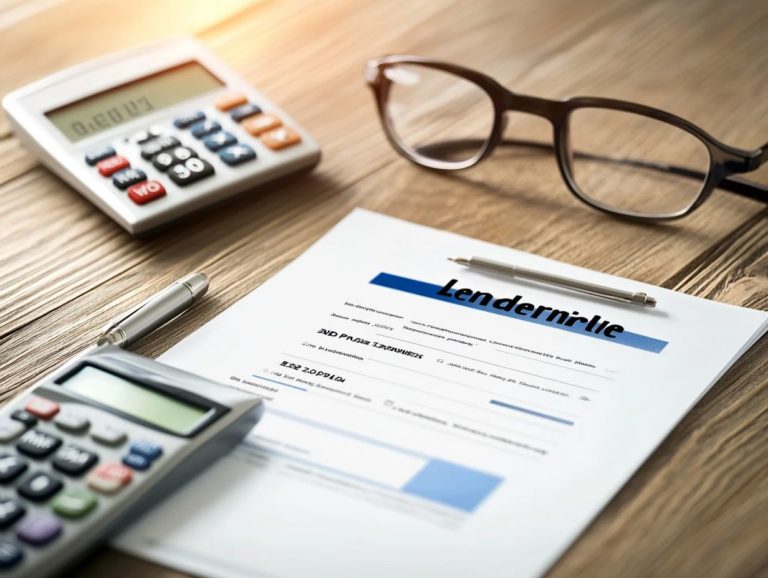Understanding Contactless Payment Security
Contactless payment has changed how you pay. It combines convenience with security.
Cashless methods are growing. It’s essential for you to understand the benefits, such as speed and lower fraud risk.
Like any technology, there are potential risks to consider. This article delves into the advantages of contactless payment, the security measures that are in place, the possible vulnerabilities, and practical tips for safeguarding your transactions.
Contents
Key Takeaways:
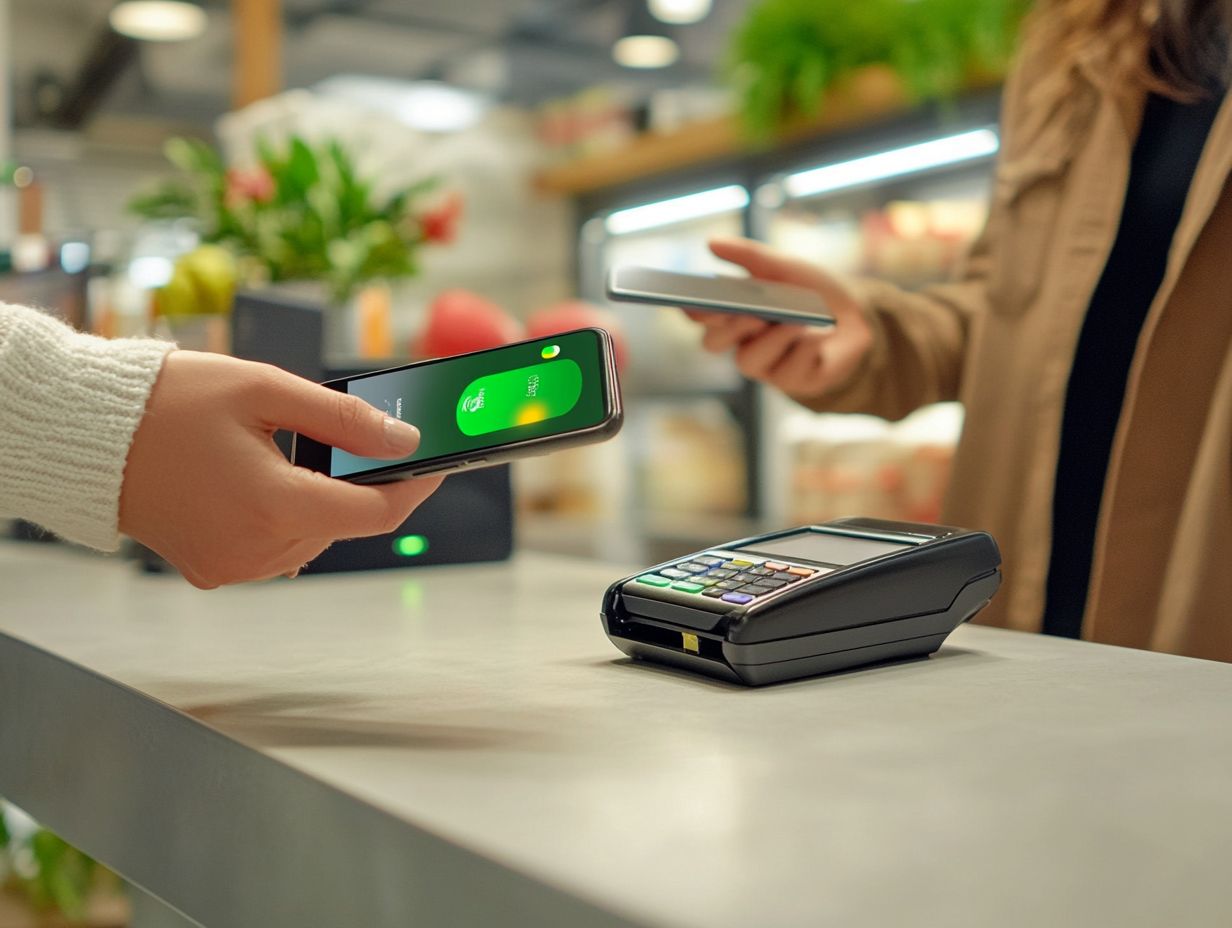
- Contactless payment offers convenience and speed, reducing the need for physical contact and saving time for consumers.
- The use of NFC (Near Field Communication) technology and tokenization provides strong encryption and added security features to protect against fraud.
- While contactless payment offers many benefits, it’s important to be aware of potential risks and take necessary precautions, such as monitoring your transactions and reporting lost or stolen devices immediately.
What is Contactless Payment?
Contactless payment is your ticket to a secure and swiftly growing transaction method that uses NFC (Near Field Communication) and RFID (Radio Frequency Identification) technology. It enables you to make digital payments quickly using mobile devices, contactless cards, and digital wallets like Google Wallet and Apple Pay. This method has become a favorite among smartphone users for retail purchases, online transactions, and cash-free dealings in public spaces, creating an efficient and convenient payment ecosystem.
The magic of contactless payment lies in the seamless exchange of data between your payment device and the reader. This makes transactions incredibly fast while requiring minimal physical contact.
In countries such as the United States, Australia, and the United Kingdom, you ll notice significant adoption of this technology, reflecting a global trend toward convenience. Major payment systems like American Express and Mastercard have been instrumental in helping retailers integrate these seamless transaction protocols, catering to tech-savvy consumers who prefer to minimize cash interactions.
As urban areas increasingly embrace smart technology, the adoption and versatility of contactless payments become ever more essential in shaping the landscape of modern commerce.
Benefits of Contactless Payment
Contactless payment presents a wealth of advantages that elevate consumer trust and satisfaction. It transforms transactions into a process that is not only swifter but also remarkably convenient.
This innovation enhances operational efficiency for businesses and ensures that you, as a consumer, enjoy a truly seamless payment experience.
Convenience and Speed
One of the standout features of contactless payment is the convenience of tap-and-go transactions. This allows you to swiftly pay with your mobile device or contactless card without the hassle of entering a PIN or signing anything. As a result, you significantly reduce the time spent at payment terminals.
This convenience isn t merely a luxury; it fits today s fast-paced retail environment, where every second counts. Imagine being able to browse and buy in a flash!
As more consumers opt for digital wallets and contactless cards, retailers see the benefits of smoother transaction processes, which ultimately leads to increased customer satisfaction. This shift in payment preferences reflects a growing trend towards modern payment systems that prioritize speed, efficiency, and convenience mirroring your desire for a seamless, hassle-free shopping experience.
Now that you know about contactless payment, stay informed and make secure choices for your transactions!
Reduced Risk of Fraud
Contactless payment methods provide you with superior fraud protection and payment security, thanks to sophisticated features like encryption and tokenization that address any lingering concerns you might have about credit card fraud and data breaches.
These technologies work by transforming sensitive information into unique tokens, allowing transactions to proceed without revealing your actual account details. For example, in contactless transactions, your card information is never directly shared with the merchant, significantly reducing the risk of interception by cybercriminals. Encryption adds an extra layer of security by scrambling data during transmission.
As a result, you can confidently make purchases using your smartphone or smartwatch, enjoying a seamless experience paired with robust fraud protection that traditional payment methods simply can t match.
Security Features of Contactless Payment
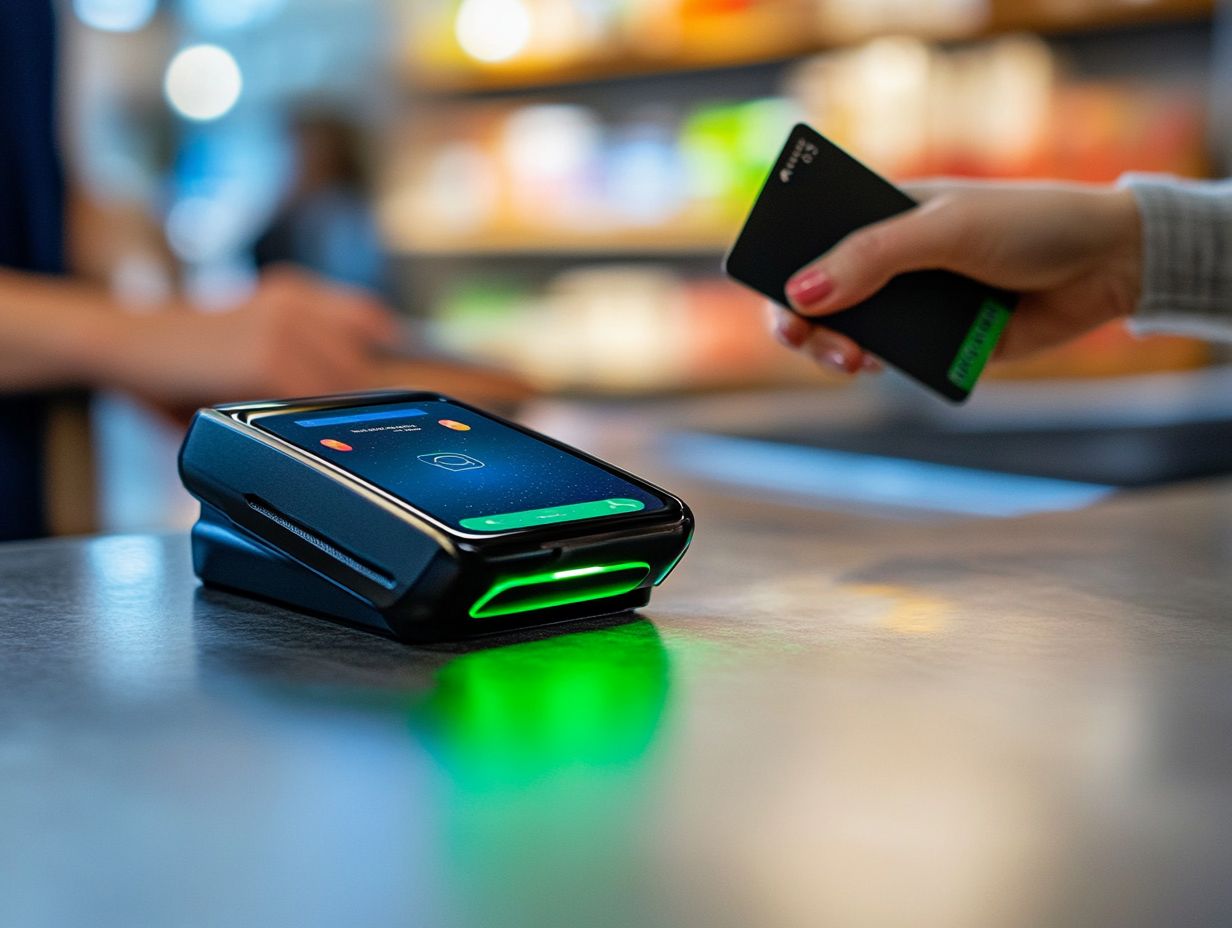
The security features of contactless payment are impressively robust, utilizing NFC technology, encryption, and tokenization to ensure your financial data is transmitted securely.
This careful approach lets you engage in transactions across diverse retail environments and online platforms with complete peace of mind.
NFC Technology and Encryption
NFC, which stands for Near Field Communication, is a technology that enables secure communication between your mobile devices and payment terminals through encrypted data transmission that guarantees transaction integrity and user privacy.
This innovative technology gives your devices the power to communicate over short distances, usually just a few centimeters, adding an extra layer of security. When you tap your device against a payment terminal, your information is securely embedded within an encryption framework, making it incredibly challenging for unauthorized parties to intercept your sensitive data.
Payment methods such as mobile wallets, smart cards, and wearables harness the synergy of NFC and encryption, enabling seamless transactions across various settings, from retail stores to public transportation systems. As this technology continues to evolve, you ll find that both businesses and consumers benefit from enhanced convenience while maintaining a strong sense of trust in the security of their financial interactions.
Tokenization
Tokenization stands as a crucial security feature in contactless payments, replacing sensitive financial information with a unique identifier, or token. This ensures that your actual financial data is never transmitted or stored, greatly enhancing your protection against fraud.
The process generates a random token that corresponds to your original data but holds no value of its own, effectively safeguarding your sensitive information from potential breaches. The importance of tokenization in modern payment systems cannot be overstated; it is key to making your transactions safe and sound.
When you know your financial details are well-protected, you re more inclined to embrace contactless payments. This fosters wider acceptance and utilization.
Potential Security Risks of Contactless Payment
While contactless payments present a wealth of advantages, it’s important to remain vigilant about potential security risks. These include threats such as skimming and data theft, as well as the vulnerabilities that come with lost or stolen devices, which could jeopardize your sensitive financial information.
Don t wait! Switch to contactless payments for ultimate security today!
Skimming and Data Theft
Skimming is a pressing concern for users of contactless payment systems. Fraudsters can use specialized equipment to capture information from your contactless cards or mobile payments. This puts you at risk for data theft and increases the chances of credit card fraud.
This method often involves scam devices that can be inconspicuously placed near payment terminals or in crowded areas. This raises alarms among consumers and security professionals alike. For example, incidents occurring in busy public transit systems and retail environments clearly demonstrate how easily attackers can exploit this vulnerability. The consequences extend beyond mere financial losses; they can significantly undermine consumer trust in digital payment methods.
Therefore, it s essential for you to stay vigilant. Regularly monitor your account statements and consider employing additional security features such as alerts for unauthorized transactions to help mitigate the risks that come with the convenience of contactless payments.
Lost or Stolen Devices
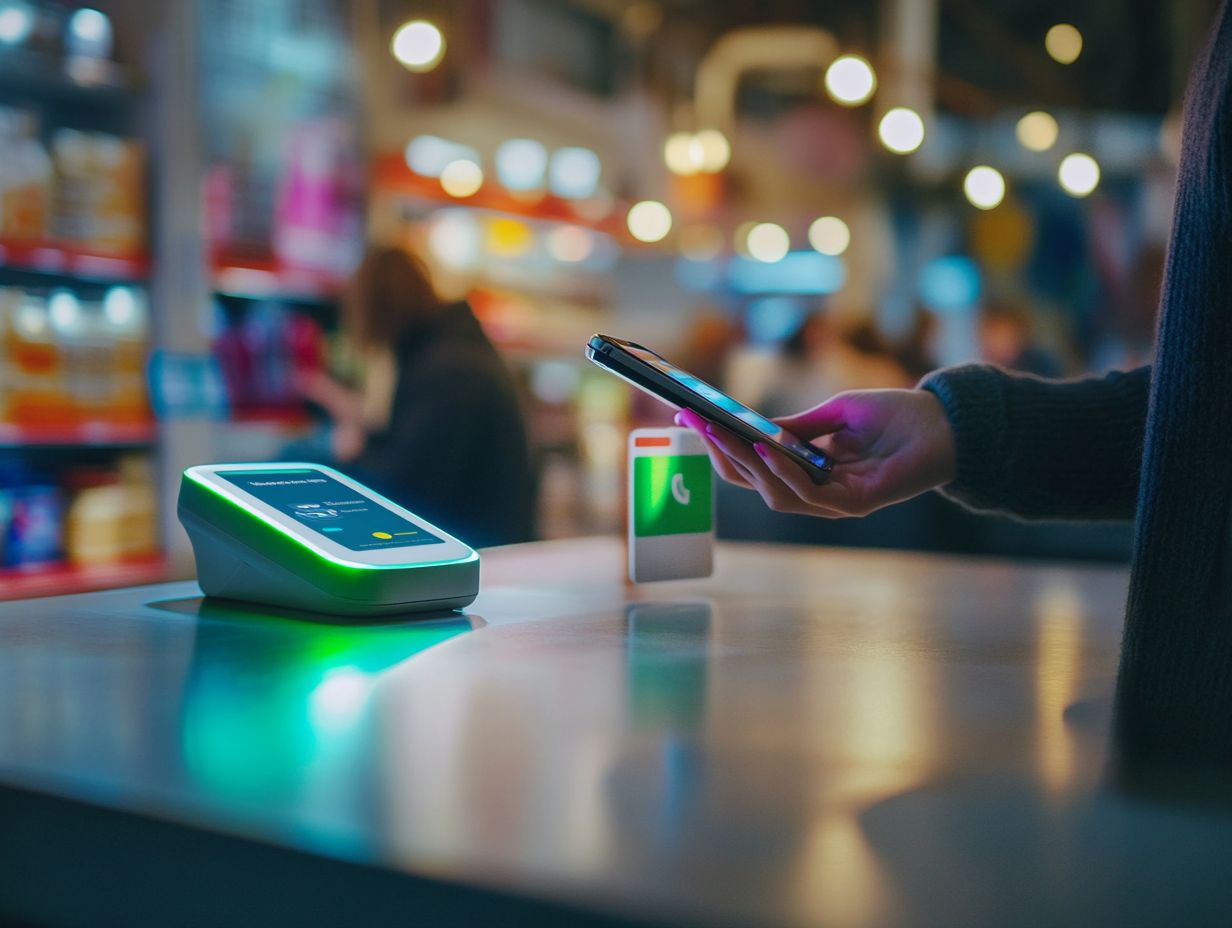
The loss or theft of your mobile device can present a serious security threat, especially in the realm of contactless payments. These devices often hold private financial information and grant access to your digital wallets. You must act quickly to safeguard your information.
First and foremost, you should remotely lock or wipe your device using built-in features like Find My iPhone or Android Device Manager. It s also wise to contact your bank to report the loss. This can help prevent unauthorized transactions and keep your financial accounts secure.
Create strong, unique passwords proactively and update them regularly to reduce your risk. Enabling two-factor authentication on your banking apps provides an additional layer of protection, making it significantly more challenging for anyone to access your sensitive information.
Lastly, make it a habit to monitor your account activity for any suspicious transactions. Start checking your transactions today to stay one step ahead of fraudsters!
How to Protect Yourself from Contactless Payment Fraud
To safeguard yourself from contactless payment fraud, it s crucial to understand best practices and employ effective fraud detection techniques. This knowledge ensures that your financial data stays secure while navigating the world of mobile payment systems and digital wallets.
Best Practices for Using Contactless Payment
Implementing best practices for using contactless payment is vital for addressing security concerns. Regularly monitor your transaction history and utilize fraud detection tools offered by banks or payment systems to stay ahead of potential threats.
Along with these steps, ensure your devices are secured with strong passwords or biometric authentication, which uses fingerprints or facial recognition to unlock your device. This not only safeguards your information but also adds an extra layer of protection.
While making contactless payments, remain aware of your surroundings. It’s wise to be cautious of potential skimmers or unauthorized devices that might attempt to capture your sensitive information.
Consider enabling alerts for every transaction, which will promptly notify you of any suspicious activity. Lastly, make it a habit to update your payment apps and security software regularly. Doing so enhances your defense against emerging threats, fostering a much safer payment experience overall.
What to Do if Your Card is Lost or Stolen
If your contactless card is lost or stolen, you need to act quickly to protect your financial data and activate ways to protect against fraud.
First, contact your bank to report the loss. They can freeze your account to prevent unauthorized transactions.
Next, learn about the fraud protection services your bank offers, as these can provide an extra layer of security.
After that, keep a close eye on your financial statements for any suspicious activity. Set up alerts for future transactions. Don’t wait! Act now to protect your finances!
Frequently Asked Questions
What is contactless payment security?
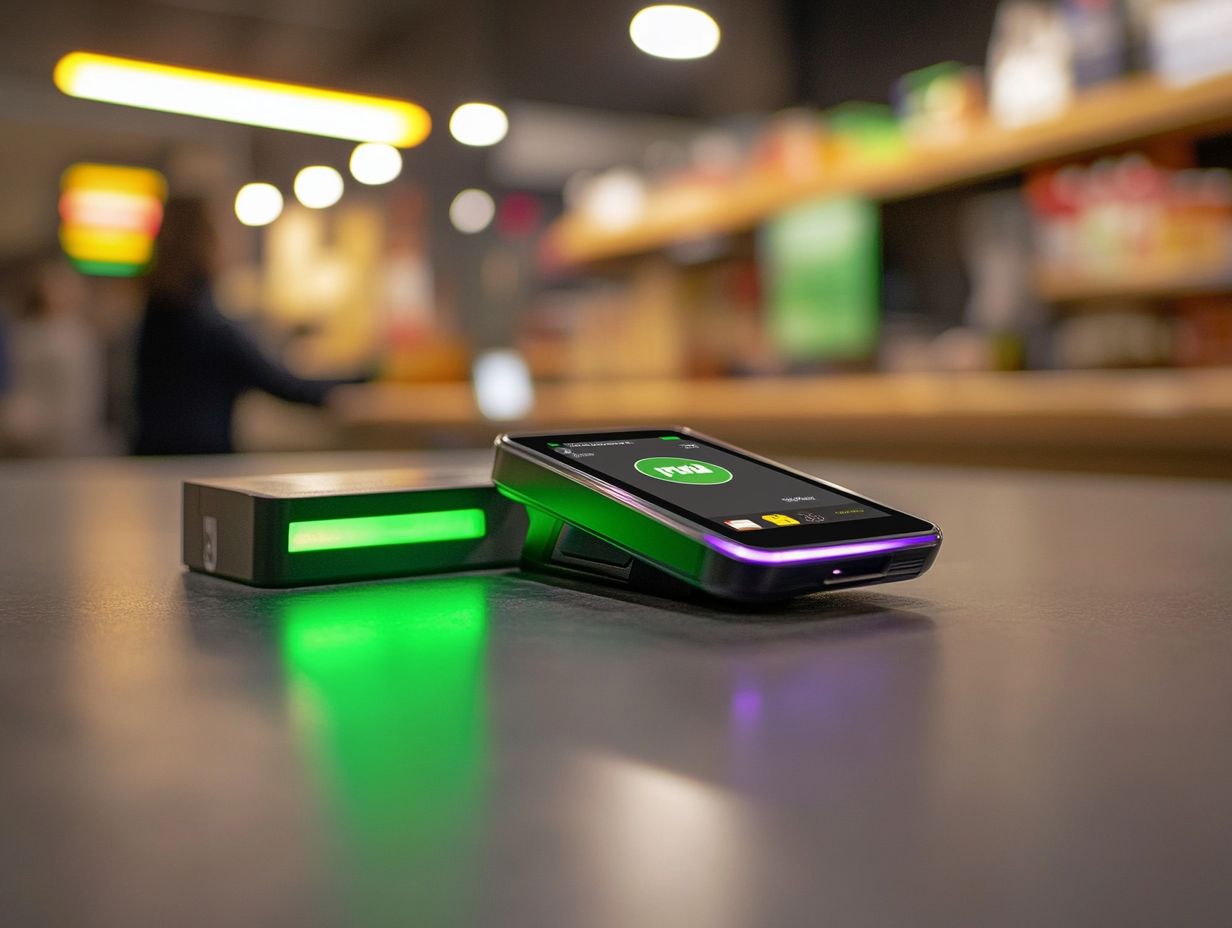
Contactless payment security means using safeguards to protect your information when you tap a card or device to pay.
How does contactless payment work?
Contactless payment uses near-field communication (NFC) technology to transmit payment information wirelessly. The device must be held close to the reader for the transaction to go through.
Is contactless payment secure?
Yes, contactless payment is generally secure. It uses encryption technology to protect information, making it hard for hackers to intercept.
What are the security features of contactless payment?
Security features include tokenization, which replaces sensitive card information with a unique code, and transaction limits to prevent large unauthorized transactions.
Are there any risks associated with contactless payment?
Like any payment method, there are risks, including theft or loss of the device and potential interception of payment information by hackers.
How can I protect my contactless payments?
To protect your contactless payments, keep your device secure and use only trusted and secure contactless-enabled readers. Monitor your transactions regularly to spot any suspicious activity.



